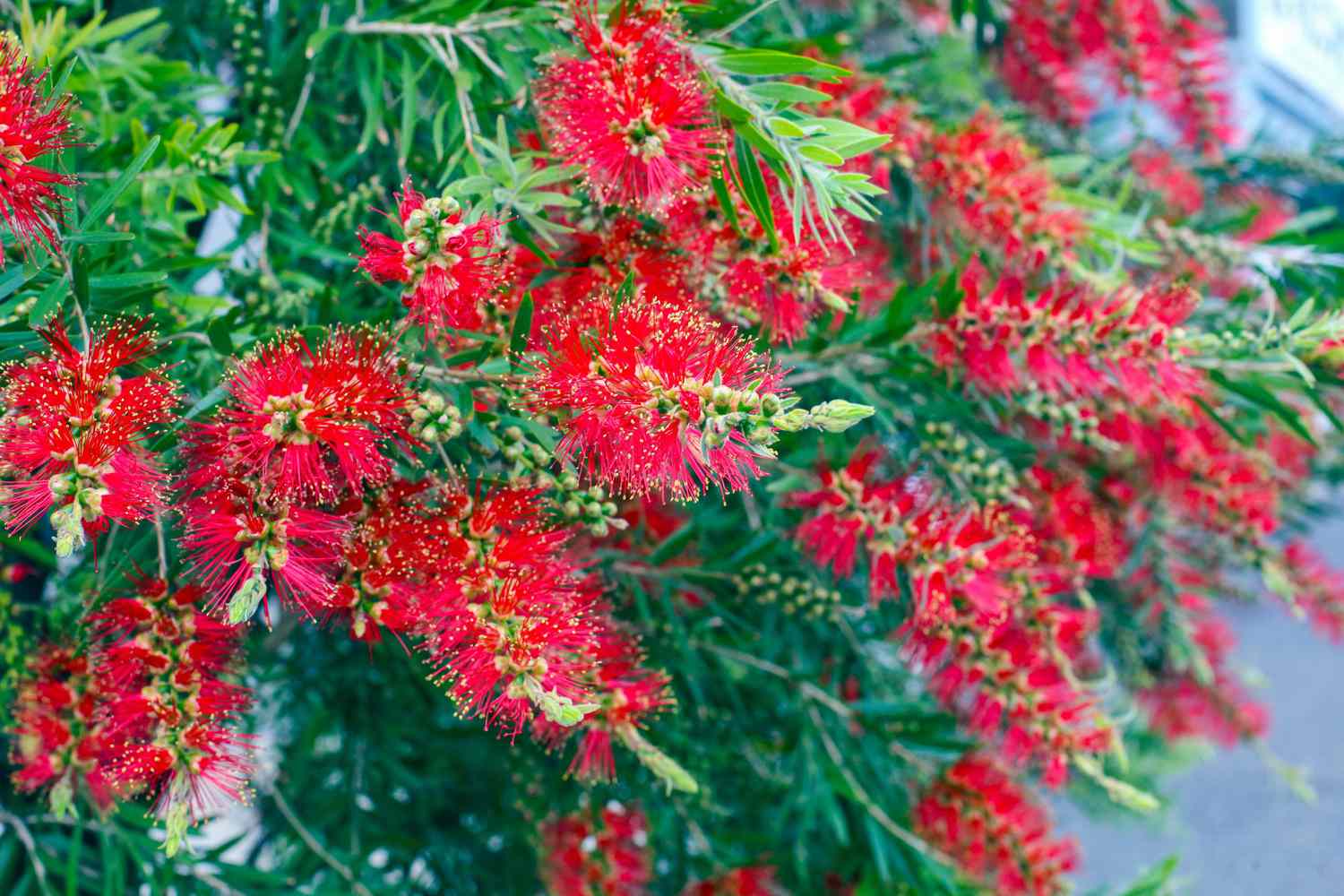Flowering trees, often referred to as flower tree plants, are a stunning addition to any garden, transforming an ordinary outdoor space into a vibrant, colorful landscape. These trees not only produce beautiful blossoms, but they also provide shade, enhance air quality, and attract pollinators like bees and butterflies. Whether you’re an experienced gardener or a novice, choosing the right flowering tree can bring long-term beauty and environmental benefits to your garden. In this guide, we’ll explore everything you need to know about growing and caring for these wonderful trees.
(Internal link: To learn more about how to create a thriving garden, visit Grandma Gardens.)
Popular Types of Flowering Trees
Choosing the right flower tree plant starts with understanding the different varieties available. Here are a few popular flowering tree plants to consider:
- Dogwood (Cornus florida): Known for its large, white or pink blossoms, Dogwood is a favorite for spring gardens. It grows well in both sunny and shady spots, making it a versatile choice.
- Magnolia (Magnolia grandiflora): With large, fragrant flowers and glossy green leaves, Magnolia trees are a showstopper in any garden. They thrive in warmer climates and offer year-round beauty with evergreen varieties.
- Cherry Blossom (Prunus serrulata): Famous for their delicate pink or white blooms, cherry blossoms are celebrated worldwide for their fleeting, yet breathtaking spring display. They do best in full sun and well-drained soil.
These flowering trees are not only visually appealing but can also attract beneficial wildlife, adding life and movement to your garden.
How to Choose the Right Flowering Tree Plant
When selecting a flower tree plant for your garden, it’s important to consider several factors to ensure it thrives in your space:
- Climate: Different flowering trees have varying tolerance levels for temperature and weather conditions. For example, cherry blossoms do well in temperate climates, while magnolias thrive in more tropical zones.
- Soil Type: Some trees prefer well-drained, sandy soils, while others might require more moisture-retentive clay soils. Check the soil type in your garden before choosing a tree.
- Garden Space: The size of the tree at maturity is essential to consider. If you have a small garden, a dwarf variety might be best, while larger yards can accommodate bigger trees like magnolias or dogwoods.
By selecting a tree that matches your local climate and garden conditions, you can ensure that it will flourish for years to come.
Planting Flower Tree Plants: Step-by-Step Guide
Once you’ve chosen the right flowering tree for your garden, follow these steps to plant it successfully:
- Prepare the Site: Select a location that offers the right amount of sunlight and space for the tree to grow. Ensure the soil is well-draining and free from weeds or debris.
- Dig the Hole: The hole should be twice as wide and just as deep as the root ball of your tree. Loosen the soil at the bottom and sides of the hole to promote root growth.
- Place the Tree: Carefully place the tree in the hole, ensuring the top of the root ball is level with the ground surface. Fill the hole with soil, pressing gently to remove air pockets.
- Water Thoroughly: After planting, water the tree deeply to help settle the soil and encourage the roots to establish.
- Mulch: Apply a layer of mulch around the base of the tree to retain moisture, regulate temperature, and suppress weeds.
The best time to plant a flower tree plant is during the dormant season—late fall or early spring—when the tree’s energy can be focused on root development.
Caring for Flowering Trees
Caring for your flowering tree plant is essential to ensure it blooms beautifully year after year. Here are some essential tips:
- Watering: Young trees need regular watering to establish their roots. Water deeply once a week during dry periods, ensuring the soil stays moist but not waterlogged.
- Mulching: Mulch helps to conserve moisture, reduce weed growth, and protect the roots. Apply a 2-3 inch layer of organic mulch around the base of the tree, keeping it away from the trunk to prevent rot.
- Fertilizing: Fertilize flowering trees in early spring to promote healthy growth and vibrant blooms. Use a balanced, slow-release fertilizer and follow the recommended dosage for the tree species.
- Pruning: Regular pruning helps remove dead or diseased branches and promotes healthy growth. Prune flowering trees in late winter or early spring, before new growth begins.
- Pest and Disease Control: Common pests, like aphids and caterpillars, can damage flowering trees. Use natural remedies like neem oil or insecticidal soap to keep pests in check. Keep an eye out for signs of disease, such as discolored leaves or bark damage, and treat promptly.
With the right care, your flowering tree will thrive, providing beautiful blossoms for many years.
Benefits of Flower Tree Plants in Your Garden
Flower tree plants offer numerous benefits beyond their visual appeal:
- Environmental Benefits: Flowering trees improve air quality by absorbing pollutants and producing oxygen. They also provide shade, which can reduce energy costs by cooling your home naturally.
- Biodiversity: Flowering trees attract a range of pollinators, including bees, butterflies, and birds, fostering a more biodiverse ecosystem in your garden.
- Seasonal Beauty: Flowering trees provide multi-season interest, with spring blossoms, summer shade, and often vibrant autumn foliage.
By adding flower tree plants to your garden, you create a natural habitat that benefits both you and the environment.
Conclusion
Flowering trees are a wonderful way to enhance the beauty, health, and biodiversity of your garden. With a variety of tree types to choose from, there’s a flowering tree plant for every space and climate. Whether you’re looking for the delicate blooms of a cherry blossom or the year-round appeal of a magnolia, planting and caring for a flowering tree can bring long-lasting joy to your outdoor space.
To learn more about how to care for your garden, visit Grandma Gardens, your go-to resource for all things gardening!

